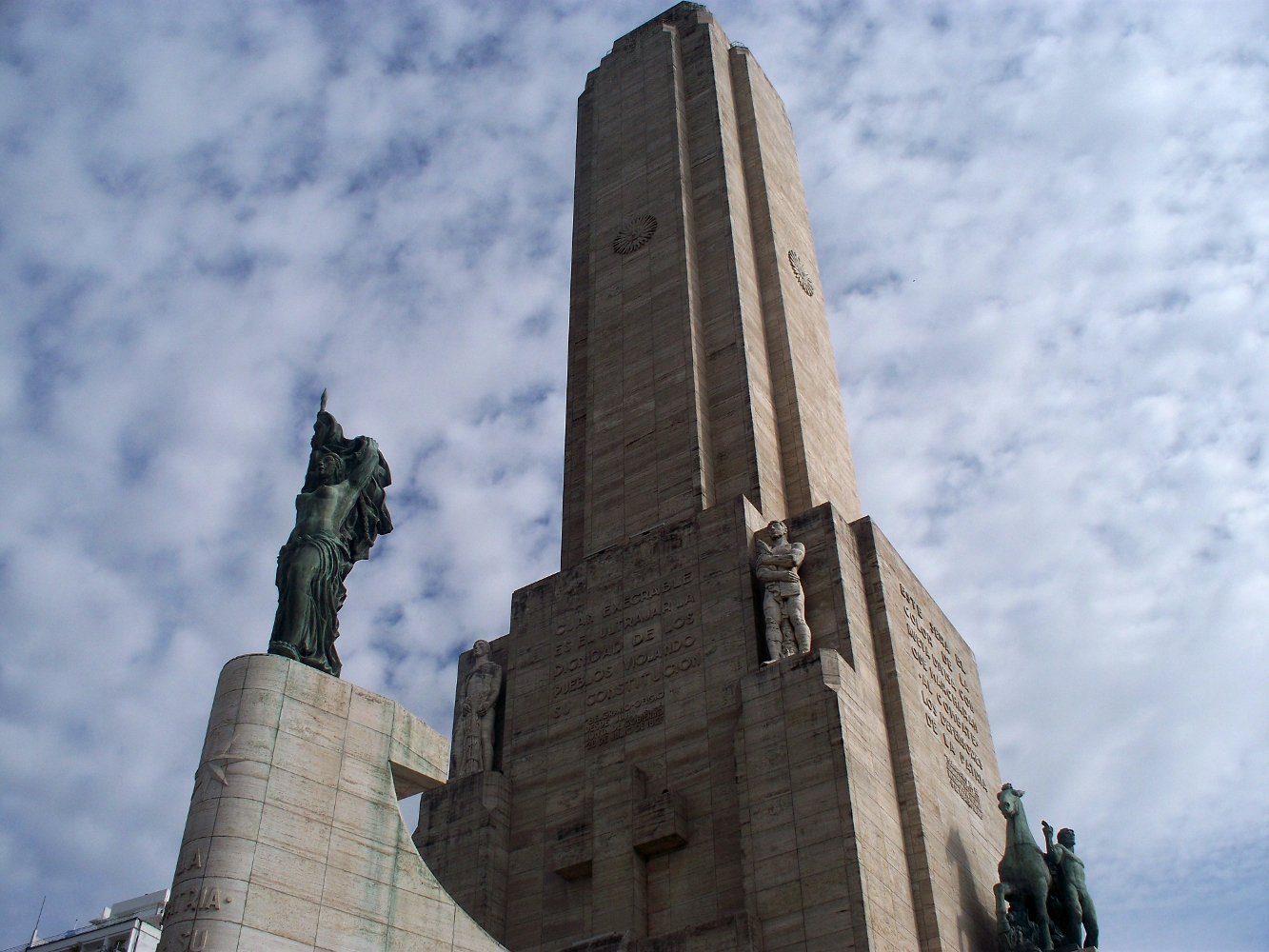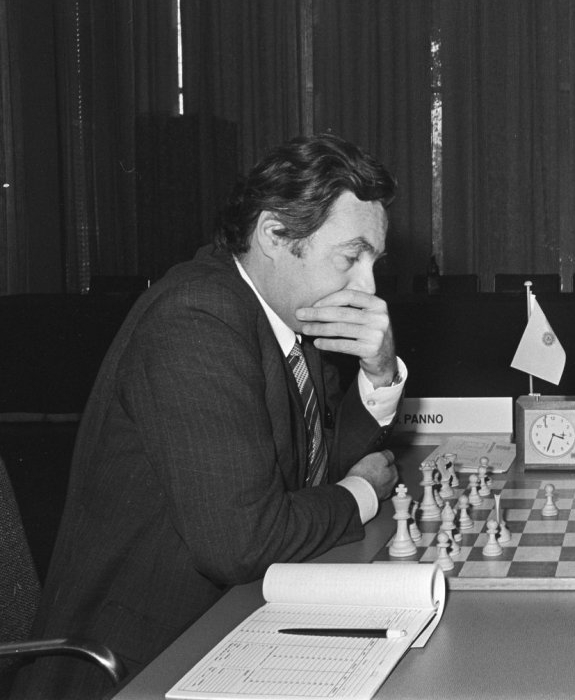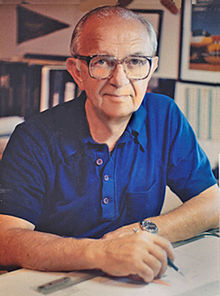|
Otto Krause Technical School
The Escuela Técnica Otto Krause is an educational institution located at the intersection of Paseo Colón Avenue and Chile Street, in the San Telmo section of Buenos Aires, Argentina. Named after its founder, the engineer Otto Krause, son of German immigrants, the school was founded in 1897 and is the oldest technological school in the country. The school currently has around 2000 students and operates a six-year programme. The first three years (ciclo básico) provide a technical high-school programme for students who have completed their elementary education. Years four to six (ciclo superior) provide the equivalent of a technical college education in various branches of engineering technology. On completion of their studies here students may go on to university to follow a six-year programme leading to a degree in engineering. The present school building, which was inaugurated on May 24, 1909, was declared a National Monument in 1995. Notable alumni * Gregorio Baro, scientis ... [...More Info...] [...Related Items...] OR: [Wikipedia] [Google] [Baidu] |
San Telmo
San Telmo ("Saint Pedro González Telmo") is the oldest ''barrio'' (neighborhood) of Buenos Aires, Argentina. It is a well-preserved area of the Argentine metropolis and is characterized by its colonial buildings. Cafes, tango parlors and antique shops line the cobblestone streets, which are often filled with artists and dancers. A street named the "Illuminated Block" is where many of these important historical buildings can be found. San Telmo's attractions include old churches (e.g. San Pedro Telmo), museums, food halls and stalls, antique stores and a semi-permanent antique fair ('' Feria de Antigüedades'') in the main public square, Plaza Dorrego. Tango-related activities for both locals and tourists are in the area. History Known as San Pedro Heights during the 17th century, the area was mostly home to the city's growing contingent of dockworkers and brickmakers; the area became Buenos Aires' first "industrial" area, home to its first windmill and most of the early city's b ... [...More Info...] [...Related Items...] OR: [Wikipedia] [Google] [Baidu] |
Buenos Aires
Buenos Aires ( or ; ), officially the Autonomous City of Buenos Aires ( es, link=no, Ciudad Autónoma de Buenos Aires), is the capital and primate city of Argentina. The city is located on the western shore of the Río de la Plata, on South America's southeastern coast. "Buenos Aires" can be translated as "fair winds" or "good airs", but the former was the meaning intended by the founders in the 16th century, by the use of the original name "Real de Nuestra Señora Santa María del Buen Ayre", named after the Madonna of Bonaria in Sardinia, Italy. Buenos Aires is classified as an alpha global city, according to the Globalization and World Cities Research Network (GaWC) 2020 ranking. The city of Buenos Aires is neither part of Buenos Aires Province nor the Province's capital; rather, it is an autonomous district. In 1880, after decades of political infighting, Buenos Aires was federalized and removed from Buenos Aires Province. The city limits were enlarged to include t ... [...More Info...] [...Related Items...] OR: [Wikipedia] [Google] [Baidu] |
Argentina
Argentina (), officially the Argentine Republic ( es, link=no, República Argentina), is a country in the southern half of South America. Argentina covers an area of , making it the second-largest country in South America after Brazil, the fourth-largest country in the Americas, and the eighth-largest country in the world. It shares the bulk of the Southern Cone with Chile to the west, and is also bordered by Bolivia and Paraguay to the north, Brazil to the northeast, Uruguay and the South Atlantic Ocean to the east, and the Drake Passage to the south. Argentina is a federal state subdivided into twenty-three provinces, and one autonomous city, which is the federal capital and largest city of the nation, Buenos Aires. The provinces and the capital have their own constitutions, but exist under a federal system. Argentina claims sovereignty over the Falkland Islands, South Georgia and the South Sandwich Islands, and a part of Antarctica. The earliest recorded human prese ... [...More Info...] [...Related Items...] OR: [Wikipedia] [Google] [Baidu] |
Otto Krause
Otto Krause (July 10, 1856February 14, 1920) was an Argentine engineer and educator. Early life Krause was born in the Buenos Aires Province town of Chivilcoy to Leopoldina and Carl August Krause, both German Argentine immigrants arrived in 1851. Tending his farm with implements he brought from Germany, Carl Krause instilled an interest in machinery to his five children, though the family eventually relocated to Buenos Aires in 1870. Otto subsequently finished his secondary school studies at the prestigious Buenos Aires National College, a public college preparatory school. Engineer and educator He enrolled at the University of Buenos Aires School of Exact Sciences in 1874, though he enlisted in the Argentine Navy as an engineer's assistant later that year. He returned to civilian life in 1878 and obtained a degree in civil engineering, earning a post in the Buenos Aires Teachers' School. Krause then began a career in the Argentine railways, working in the planning departme ... [...More Info...] [...Related Items...] OR: [Wikipedia] [Google] [Baidu] |
List Of National Historic Monuments Of Argentina
The National Historic Monuments of Argentina are buildings, sites and features in Argentina listed by national decree as historic sites. This designation encourages greater protection under the oversight of the ''Comisión Nacional de Museos, Monumentos y Lugares Históricos'' (National Commission of Museums, Monuments and Historic Places), created in 1940. In addition, provinces also have local lists of historic monuments. There are approximately 400 buildings or sites on the list. Most are buildings or sites from the pre-Hispanic or Colonial periods and some are battlefields and other locations associated with the independence of the country. In recent years the government has been making efforts to include sites on the list that reflect the country's industrial and immigrant heritage. The Commission has been criticized for not doing enough to preserve the buildings on the list, and only declaring sites as monuments after they have been altered or partly demolished. City of ... [...More Info...] [...Related Items...] OR: [Wikipedia] [Google] [Baidu] |
Gregorio Baro
Gregorio Baró (June 19, 1928 - May 28, 2012) was an Argentine scientist. He was born in Santiago Temple, Córdoba and died in Buenos Aires. Biography The son of Spanish immigrants from the Province of León, more precisely from Cabreros del Río, Baró married the writer María Dhialma Tiberti. He completed his Associate of Science in Chemistry degree at the Otto Krause Technical School in Buenos Aires, in 1945. Afterward, he pursued his studies at Universidad de Buenos Aires from which he obtained a Bachelor of Science, followed by a PhD in Chemistry in 1961 at the Instituut voor Kernphysisch Onderzoek, in Amsterdam. In 1968, he conducted research on the production of radioisotopes in Bombay, India, organized by the International Atomic Energy Agency. Baró was additionally a professor at several universities, such as Universidad de Buenos Aires, Universidad Nacional de La Plata, Universidad Nacional de Cuyo, Universidad Nacional de Rosario, and Universidad Nacional de ... [...More Info...] [...Related Items...] OR: [Wikipedia] [Google] [Baidu] |
Alejandro Bustillo
Alejandro Bustillo (18 March 1889 – 3 November 1982) was an Argentine painter and architect who left his mark in various tourist destinations in Argentina, especially in the Andean region of the Patagonia. Biography Born in Buenos Aires, son of María Luisa Madero and Dr. José María Bustillo, he completed his secondary school studies at Otto Krause Technical School. He later entered the School of Architecture at the University of Buenos Aires, where he also excelled as a painter, earning a first prize at the 1912 National Salon of Painters for a self-portrait. He graduated with a degree in Architecture in 1914. He obtained his first professional experience working on the design of estancias, the first of which was for Santiago Rocca in 1916. He married Blanca Ayerza in 1917, and the couple had eight children. Bustillo designed a country house for his own family, ''Estancia La Primavera'', in 1918. Two years later he returned to Buenos Aires. After a visit to Paris, Busti ... [...More Info...] [...Related Items...] OR: [Wikipedia] [Google] [Baidu] |
Francisco Salamone
Francisco Salamone (June 5, 1897August 8, 1959) was an Argentina, Argentine architect of Italian descent who, between 1936 and 1940, during the Infamous Decade, built more than 60 municipal buildings with elements of Art Deco style in 25 rural communities on the Argentine Pampas within the Buenos Aires Province. These buildings were some of the first examples of modern architecture in rural Argentina. Life Salamone's was born in the town of Leonforte, Sicily in 1897, son of Salvatore Salamone and Antonia D'Anna. After leaving the Otto Krause Technical School in Buenos Aires he continued his studies in the National University of Córdoba where he graduated in 1917 with a degree in architecture and civil engineering. Salamone married Adolfina Croft, the daughter of the Austria-Hungarian Vice-consul in Bahia Blanca, Argentina, with whom he had four children: Ricardo, Roberto, Ana Maria and Stella Maris. During Manuel Fresco's term, a conservative politician who was governor of t ... [...More Info...] [...Related Items...] OR: [Wikipedia] [Google] [Baidu] |
Oscar Panno
Oscar Roberto Panno (born 17 March 1935 in Buenos Aires) is an Argentine chess Grandmaster. Panno was the first top world chess player born in South America. Panno won the 2nd World Junior Chess Championship in 1953, ahead of such future strong Grandmasters as Borislav Ivkov, Bent Larsen, and Fridrik Olafsson. He also won the championship of Argentina the same year. Oscar Panno became a grandmaster at the age of twenty. He competed in five interzonal tournaments, with his greatest success coming at Gothenburg 1955. In a field of 21 players, Panno finished clear third, only half a point out of second and ahead of such players as Efim Geller, Tigran Petrosian, and Boris Spassky. (He beat future World Champion Spassky in their individual game.) This result was probably the peak of his career, as it advanced him to the 1956 Candidates tournament in Amsterdam, the winner of which would play a 24-game match for the World Championship with Mikhail Botvinnik. However, his form fro ... [...More Info...] [...Related Items...] OR: [Wikipedia] [Google] [Baidu] |
Ladislao Pazmany
Ladislao Pazmany (November 25, 1923 – August 21, 2006) was an aviation pioneer, aeronautical engineer, designer, pilot, teacher, speaker, and author. Born a Hungarian, Pazmany grew up, went to school and worked in his formative years in Argentina, then immigrated to the United States where he lived for the remainder of his life. His interest in design engineering began with early model airplanes made of wood during his childhood in Argentina. Over the next six decades, Pazmany worked on gliders, small planes, jets, and missiles both for private purchase and for the largest defense contractors in America including Convair, General Dynamics and Rohr. His contributions to unmanned stealth aircraft were utilized in action during the Iraq War in 2004. Pazmany has become recognized as a world authority on landing gear, light aircraft, and flight efficiencies through his books, plans and planes. His contributions include the Pazmany PL-1 and PL-2, which were used for training, th ... [...More Info...] [...Related Items...] OR: [Wikipedia] [Google] [Baidu] |
Education In Buenos Aires
Education is a purposeful activity directed at achieving certain aims, such as transmitting knowledge or fostering skills and character traits. These aims may include the development of understanding, rationality, kindness, and honesty. Various researchers emphasize the role of critical thinking in order to distinguish education from indoctrination. Some theorists require that education results in an improvement of the student while others prefer a value-neutral definition of the term. In a slightly different sense, education may also refer, not to the process, but to the product of this process: the mental states and dispositions possessed by educated people. Education originated as the transmission of cultural heritage from one generation to the next. Today, educational goals increasingly encompass new ideas such as the liberation of learners, skills needed for modern society, empathy, and complex vocational skills. Types of education are commonly divided into formal, ... [...More Info...] [...Related Items...] OR: [Wikipedia] [Google] [Baidu] |





